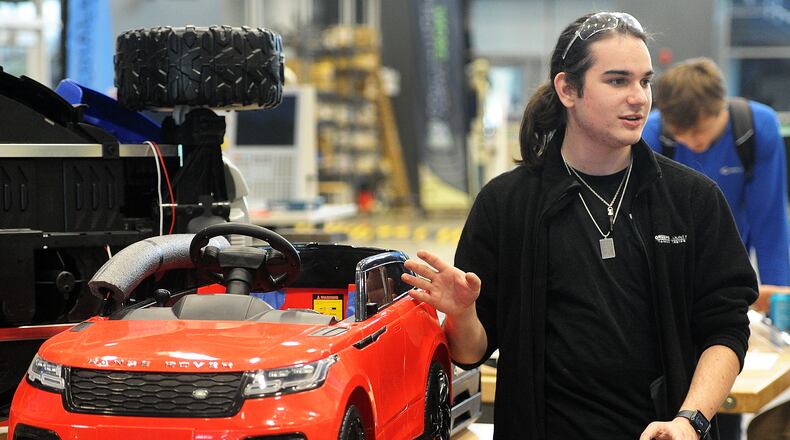“For me, it’s personal,” Walsh said.
Walsh spent a lot of time in Dayton Children’s when he was younger. When some of the doctors visited, they recognized him, he said.
The junior said he made multiple changes to the car he modified, including a radio – for fun – and extra padding on the sides.
Five children staying at Dayton Children’s Hospital will receive the cars made in Doug Picard’s Advanced Engineering Systems class. Picard received a $2,500 grant through the Ohio STEM Learning Network and Battelle for the project.
The cars are both more fun for the children and less expensive than a wheelchair, which can be outgrown easily by a three- or four-year-old but cost their family thousands of dollars. The class made 11 cars in total with six backups.
The project gave Picard’s students a hands-on way to experience engineering, something the teacher said was important to him. He said the project is discovery-based and a way for the students to use items in the lab, like a 3D printer.
“Since I get a variety of cars, there are no identical solutions and the students demonstrate creativity in designing to satisfy client requirements,” Picard said. “This project helps the students develop empathy for underserved communities and design just solutions to help them overcome challenges.”
The students in the class were told what the disabilities were, but not how to design around them. Some students added padding for the kids so that it could support an arm, for example, or the student might have to change the way the car moves forward to accommodate for a weak leg.
Picard said the class got the same grant the previous year to design adaptive toys for children rehabilitating from burns at Shriners Hospital. That project had the students think about how to design interactive toys around burns, like creating foot pedals for a penguin toy that usually responded to hands pushing it.
Credit: Contributed
Credit: Contributed
Kaden Gillespie, a junior in Picard’s class, said he was trying to figure out ways to best adapt the car to the child he was designing for. The final car had a seat with extra padding on the back and a bumper on the side, along with other modifications.
Gillespie said Picard’s class was a good way for him to learn because it’s very hands-on.
About the Author


